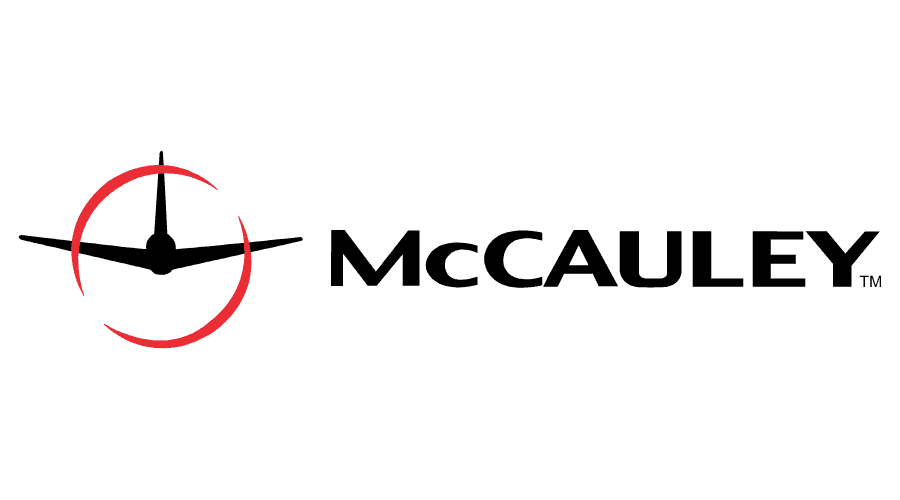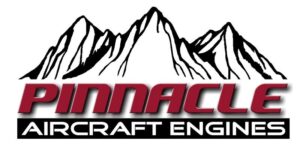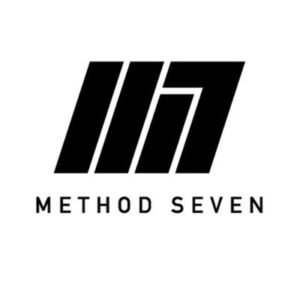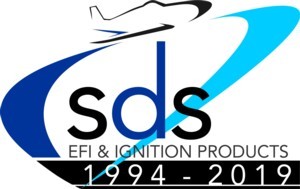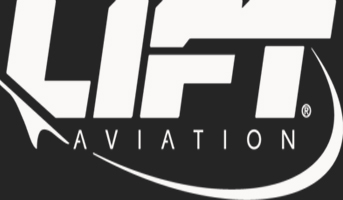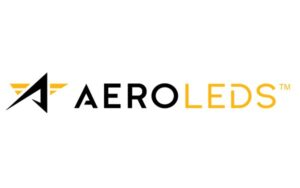After a great race week in 2021, with a heat win and no mechanical failures, we were ready to carry that momentum through 2022 and get back on top of the podium. Unfortunately this year (in many ways) just wasn’t our year.
Off-Season
In November, Microsoft Flight Simulator released the Reno Air Races expansion pack. While we were disappointed Sport Class was not included in the game’s release, “Young” Thomas was determined to get Race #30 into the game. Collaborating with Robina Custom Liveries they created a custom livery which paints “Strega” in the orange and white colors of Race #30.
Heading into the spring, we visited the Hoos Flying SAE team. We had a fun day talking about airplanes and engineering and were able to recruit three new interns to help us out during the summer. This was our second year with interns and it’s been rewarding seeing them learn how to apply all the math and concepts they learned in the classroom to real-life design problems.
PRS
We had another great time at Pylon Rookie School. A record setting 28 rookies attended this year.
OSHKOSH
This was the first year the kids were old enough to attend Airventure. We flew formation with Nick Biodo in Race 55 “Unleashed” and had a great time at the show. After many years of attending, it was cool to see the show through the kids viewpoint and the magic of aviation.
Race prep
McCauley put a fresh 4 blade propeller together with another paint job from Airframes Inc. The inspection of the 8 bolt hub and flange setup was good. This design has been a great improvement for retention of the hub and improving the crankshaft interface.
In previous years the front cylinders still run hotter than the others with the spray bar water on so additional baffles were installed. The fuel mapping was refined in the mid range 40-60” to improve transient behavior coming down the chute, but its still a challenge to get a smooth spool up.
Leading up to race week, the air race community had a huge loss. While test flying Czechmate, the engine failed and Sherman Smoot was killed in the accident. Sherman was a legend at Reno, and in aviation. Blue Skies and Tailwinds.
Race Week
Trouble started right out of the gate. One difficulty we managed to avoid was an error in the mixing of the event-provided ADI (anti-detonation injection). Rather than a 50/50 ratio of water/methanol, the actual ratio came out closer to 80/20. This effectively leans out the mixture and can lead to higher combustion temperatures and detonation. This did not affect us because over the last couple years we have been experimenting with and mixing our own water/methanol ratios.
And then there was the ash. Smoke has been a concern for the last several years. Fortunately the wind would shift mid-week and everything would clear up. This year the weather was far less cooperative. And by the end of the week 26 of 64 heats were scrubbed.
Then things started breaking.
Before qualifying we did a practice flight up high to start blending in the race fuel and buring off the 100LL from the cross country flight. The engine was running smooth, but during the first full power run the manifold pressure plummeted after 15 seconds of wide open throttle. At first it felt like an intake tube had come off, but with the wiggins clamps, this can’t happen anymore. I continued to orbit over the field and didn’t see smoke out the back of the plane, but something wasn’t right so I came in to land. At the end of the downwind I could see smoke out of the back of the plane and declared a Mayday. On rollout after landing the oil pressure started to fluctuate, but the engine was ok. Upon inspection, the right side turbo casting failed. A very odd failure since the bearings looked good and there were no signs of oil starvation.
While coordinating with Precision Turbo to deliver a new center section for the latter half of the week, we still needed a way to post a qualifying time.
Nick Biondo flies with United Airlines, and when he heard about the turbo failure, he ran to the airport, collected the older spec turbo and exhaust parts from 2018, crammed them into a suitcase and hopped on the next flight to Reno.
It was far from optimal. The SDS was tuned to the bigger turbos. Holes had to be cut into the plenum to fit the old intake tube, and we had to jerry rig the turbo intake tubes to match the smaller turbo flanges. But at least the engine was running and we could get a qualifying time to get in the show.
And even though we ran minimal boost, all our aero mods paid off, as we qualified in a [distant] second place.
The new center section arrived Thursday morning and Mark Voss had the turbo back together by lunchtime.
Although the team probably could have rushed to get the bigger turbos installed before our afternoon heat race, there were too many unknowns with the smoke and the schedule. So the plan was to ride around without boost and swap out the turbos in the evening.
Ultimately Heat 1A was scrubbed and the team immediately got to work.
Swapping the turbos is an immense effort and requires: removing the charge tubes, exhaust, turbos and mounting brackets and replacing all them with their newer equivalents. Collectively the team put in dozens of hours of work just in that one evening to get the plane ready for Friday’s heat race.
Unfortunately, the smoke was bad again on Friday and heat 2A was scrubbed as well. But the weather did clear up late in the early evening allowing us to do a test flight and check that everything was okay. Looking at the data, everything looked and sounded good, and we were ready to finally go racing.
Saturday’s schedule was different from previous years. Because Sport gold had yet to race, RARA moved our heat to the morning when the visibility was expected to be above minimums. (minimum visibility for Sport gold is 6 miles, when you are going 400mph you need to see the hills out by pylon 4)
The start of the race was good and we were chasing after Jeff. But as we ripped past home pylon I noticed cylinder 6 was getting hot and using the SDS started to add fuel to that cylinder. Going past pylon 3 and 4 it was still getting worse so I pulled up and pulled power to save the engine. I declared a mayday and landed on runway 14.
Once we got the plane back to our tent, we pulled the cowling and found two of the cylinder #6 spray bar nozzles were clogged. Upon further inspection we found corrosion in a steel Tee fitting that had been installed as a quick fix during the 2021 races. This is just another real-life example of short term fixes leading to long term problems.
After troubleshooting the spray bars, we pushed Race #30 to the Thunder Mustang hangar to borescope the engine, and confirmed cylinder #6 was toast. But all the other cylinders appeared to be fine.
So after getting a break on Friday, the team put in another huge effort replacing cylinder #6. And thanks to our morning race slot we were able to get most of the work done before it got dark.
With the cylinder replaced, there was nothing left to do but add some final pieces of speed tape and hope for good weather on Sunday and a chance to come from the back.
Starting on the outside can actually be a good thing. Assuming Andy could stay alongside Jeff Lavelle (Race #39) and Jim Rust (Race #24 Gremlin’s Castle) coming down the chute, and clearing the other racers, he would actually have an easier turn around the guide pylon and more momentum. He then could continue his dive, trading altitude for airspeed all the way through the Valley of Speed. If everything went as planned, he could overtake Jim around pylon 5 and be on Jeff’s tail by the time they reached the home pylon to start lap two. After that it would be about working the line and keeping the engine together.
But of course, things did not go as planned.
I got a decent jump but then the engine hesitated for a long time. But I finally got it relit and we were off to chase Jeff and Jim. I caught Jim in the Valley of Speed and passed him coming around pylons 7, 8, and 9. Now I was focused to catch Jeff and we had the power way up. Coming past pylon 3, cylinder #6 started getting hot again, so I added fuel. In previous years temperatures have climbed to 430F but then stabilized around 420F. Unfortunately this time the temperatures only continued to climb. Rounding pylon 5 the engine lost power and oil pressure. There was a lot of smoke as I zoom-climbed up with another Mayday, and began gliding to runway 14.
As the race continued, Jeff had pulled about a half lap lead on Jim when he suddenly pulled up and declared a mayday for a wastegate failure. He landed on Runway 14 just after Andy. Jim Rust then inherited the lead for about 15 seconds before he too suffered an engine failure.
After Andy, Jeff, and Jim were safely on the ground all eyes turned to Mathias Haid in Clas Thunder I. He already had burnt a piston during qualifying and was flying on Matt Ramsey’s backup motor. Fortunately the backup motor held on giving a much–deserved win to the Thunder Mustang team.
Peter Balmer finished in a comfortable second place. But the real race was between Vicky Benzing in Lucky Girl and George Catalano in Bad Dingo. They were nose-to-tail and wingtip-to-wingtip all race, but Vicky managed to hold on by 0.041 seconds!
Sport Gold Lap 1. “The storm before the calm” – Curt Burris
Closing Thoughts
Sadly, some have grumbled that Mathias “only” won by attrition. Well “To finish first, first you must finish.” Taking “shoulda-coulda-woulda” a step further, one could also claim we would have sneaked out a win had we just stuck with the 2018 turbos. But here’s the thing, attrition is not just part of motor racing. It is motor racing, and Mathias, Mike, Ralph and the rest of the Thunder Mustang crew deserve all the credit for what they’ve achieved.
2022 was a hard year for the team and the whole September Family. But as difficult as this year was, the Sport gold race was an instant classic. Seeing the top three DNF within two minutes of each other, provides a new appreciation for just how hard we are pushing these engines, and a new champion highlights that the class is still in its golden age.
For 2023 the team has a lot of work cut out for us. Race #30 is still in Reno waiting for a new engine, and we still need to find a way to keep cylinder #6 cool. But we will keep at it and be ready to fly fast again next September!
After all the DNF’s in the Sport race, the Jet Gold class was up next. Qualifying and each heat race had been close with Aaron Hogue and Pete Staverides battling at over 500 mph in their L-29’s with the Viper engines. The excitement quickly turned to tragedy when Aaron g-locked and impacted the ground near pylon 5. Aaron was a great ambassador to the sport and he will be missed. Blue Skies and Tailwinds.
As always, Thank You to the team, sponsors, volunteers and family. Reno brings such a special group of people together, and even broken engines, long nights, and tragedy, can’t shake the love and respect everyone shows.

